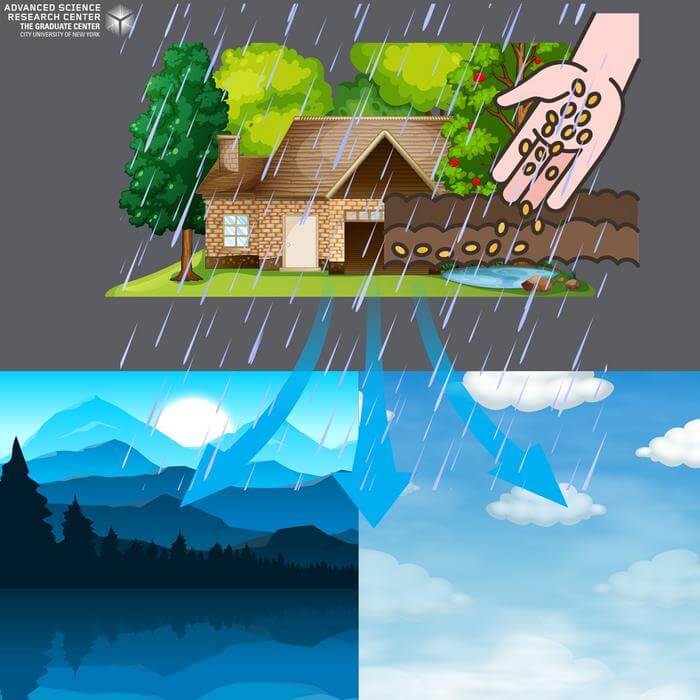NEW YORK — Countless U.S. homeowners take great pride in their lawns and spend a whole lot of time ensuring their yards remain green, healthy, and lush. However, is the American obsession with maintaining a well-tended yard actually damaging the environment as a whole? Apparently so, according to new research, at least among those using fertilizer on their lawns.
Scientists from the Advanced Science Research Center at the CUNY Graduate Center and Brooklyn College report that when the nitrogen in fertilizers washes downstream or escapes into the atmosphere, it can lead to a major environmental health problem. Researcher Peter Groffman and his colleagues analyzed various residential landscapes in the Baltimore, Maryland metropolitan area, which drains to the Chesapeake Bay, in an attempt to identify locations (hotspots) or times (hot moments) showing disproportionately high rates of nitrogen export. All in all, they found fertilized lawns tend to be hotspots of nitrogen export into both our water and atmosphere.
“We found that these fertilizers applied to particular places at particular times are more likely to move into receiving waters where they can have deleterious consequences, including spawning algal blooms and deoxygenated waters,” says Groffman, an environmental sciences professor with the Advanced Science Research Center at the CUNY Graduate Center and Brooklyn College, in a media release. “This information can be very useful in helping individual residents and municipalities adjust lawn care practices that are harming our environment and ultimately our health.”

To conduct this research, study authors traveled to lawns in Baltimore’s exurban, suburban, and college campus areas to measure the export of nitrogen to water and air during simulated rainfall events. These events were created through the addition of known amounts of water to lawns in the field. Additionally, study authors also made use of household survey data collected by the Baltimore Ecosystem Study Long Term Ecological Research in 2003, 2011, and 2018.
Finally, researchers also utilized their own push-to-web survey that asked about lawn fertilization practices and encompassed 3,836 Baltimore area households. This analysis of lawns’ nitrogen export dynamics revealed a great deal of variation. However, all of the export hotspots were found on fertilized lawns rather than unfertilized.
Importantly, the research project also reports that 48 percent of respondents surveyed in 2018 incorrectly believed that they did not live in a watershed, and over 60 percent of web survey respondents did not know that nitrogen negatively affects area waterways. After learning about these facts, support for policies limiting fertilizer use spiked much higher among surveyed households, with certain restrictions even garnering support among those who fertilize their lawns.
Roughly half of the households showed interest in converting their lawns to include features that reduce nitrogen export – such as rain gardens – if these changes are subsidized and made as easy as possible. Study authors estimate changing about five to 10 percent of suburban lawns to alternative landscaping may be enough to have a major positive effect on watershed-wide nitrogen export.
The study is published in PNAS Nexus.
You might also be interested in:
- Best Lawn Mowers: Top 5 Grass Cutters Most Recommended By Experts
- Best Lawn Sprinklers: Top 5 Devices Most Recommended By Experts
- Best Grass Seed: Top 4 Brands Most Recommended For A Healthy Lawn


Same old crap that is putting thousands of Dutch farmers off their farms.
There have been Algae blooms for millions of years. Water becomes de-oxygenated in a multitude of ways. Without waves and waterfalls ALL water would be de-oxygenated. That is why you have aerators in fish tanks.
I understand that children have to have ‘projects/studies” to obtain their degrees, and I understand that studying the suburbs of Baltimore is cheaper than the Amazon highlands, but really?